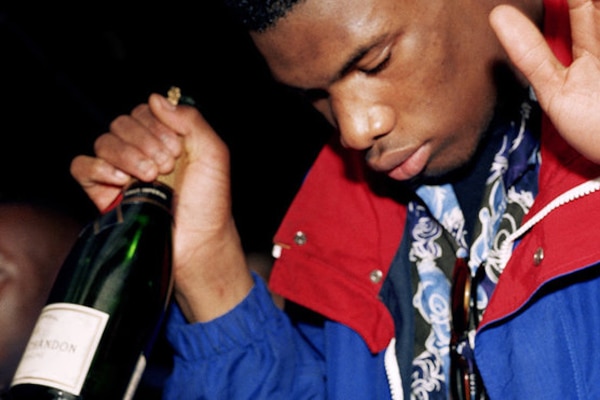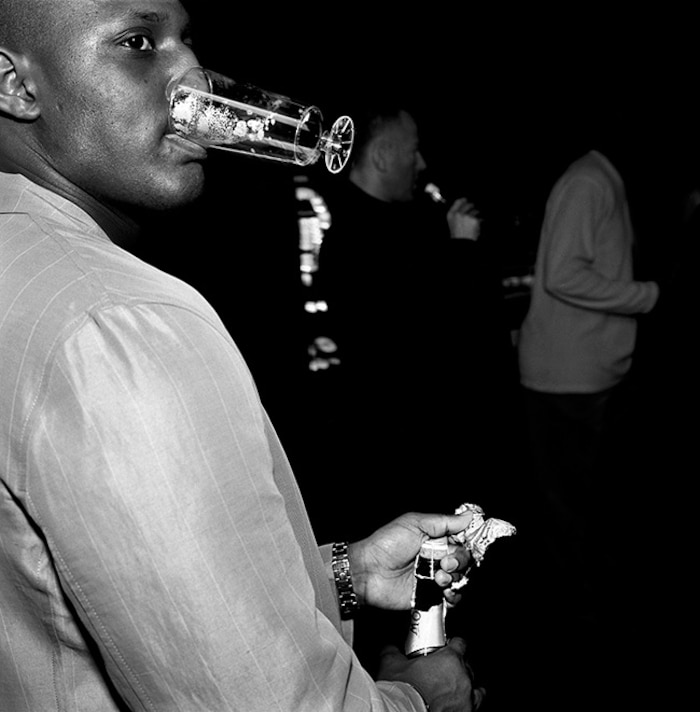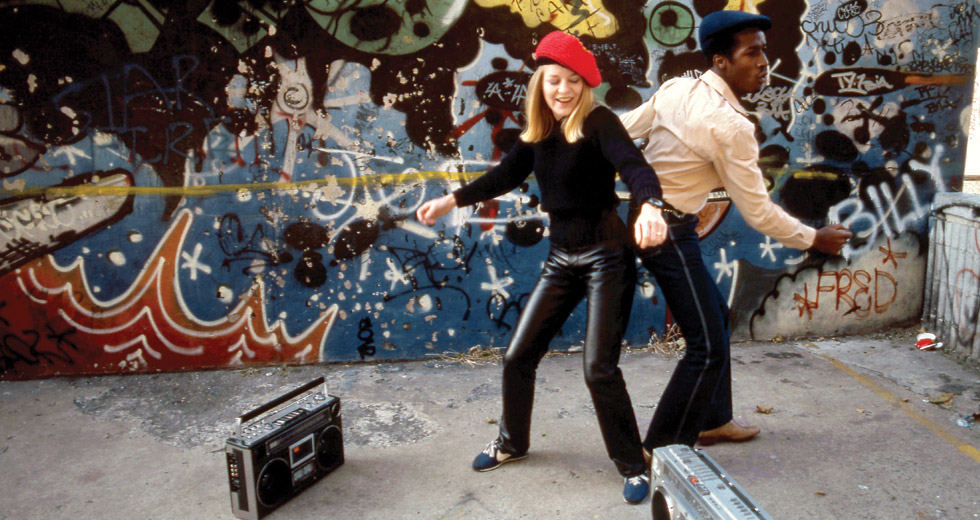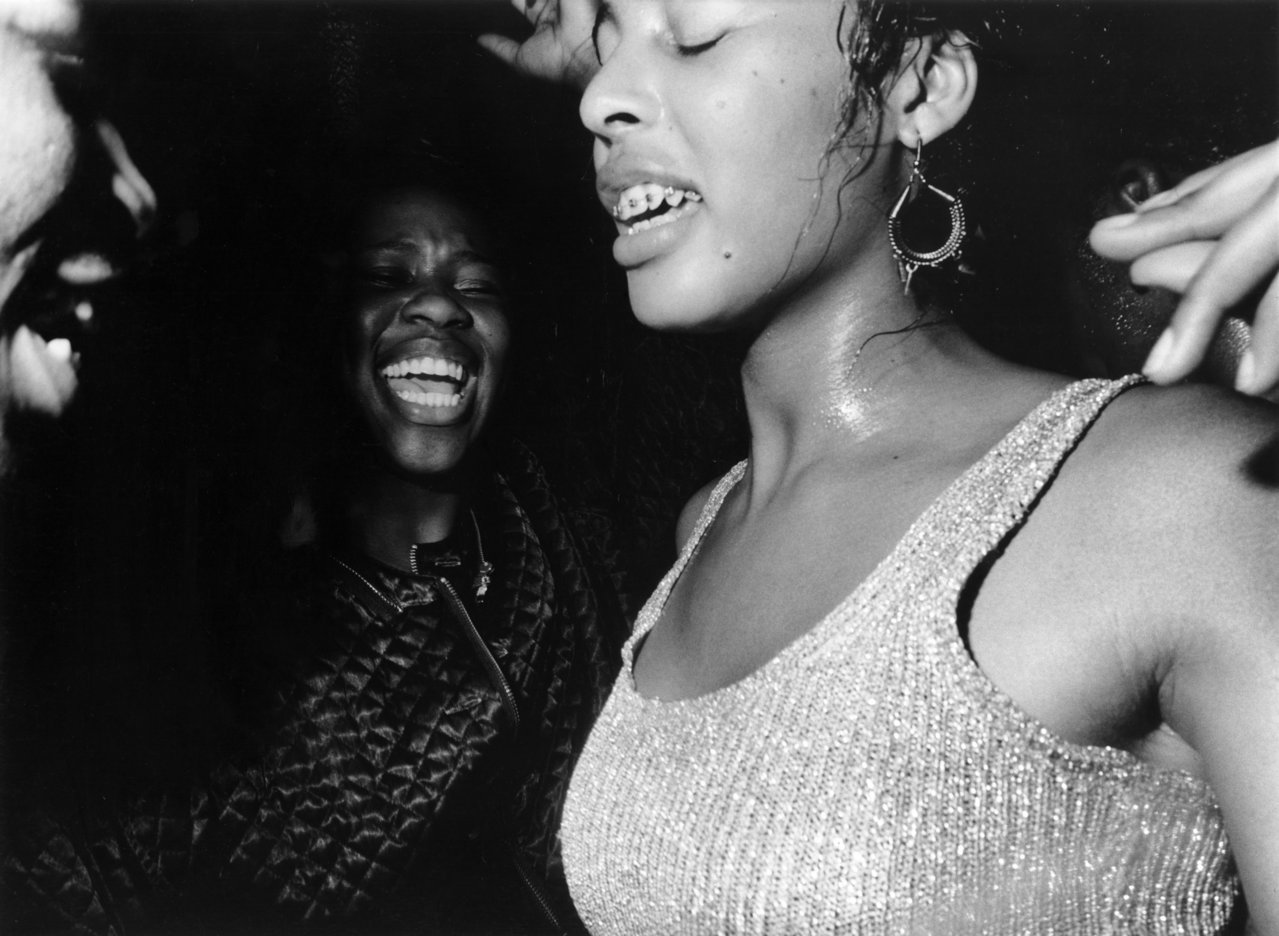Nightclubbing: Happy Days, London’s Sunday Scene and the Birth of UK Garage

It started as a humble Sunday morning after-party but quickly inspired a whole host of events, and kickstarted one of London’s most culturally important music scenes. Yet more than two decades later, Happy Days’ influence is rarely given much credit.
Happy Days sprung out of AWOL: a legendary indoor mega-rave that ruled London’s hardcore scene in the early ’90s. D&B pioneers like Kenny Ken, Randall and Mickey Finn were residents. The atmosphere inside the club was edgy and the music was manic, proto-jungle. Closing time occasionally resulted in chaos as pie-eyed ravers returned to their cars to find them towed away by market traders.
It was a simple premise: Why not throw an after party to catch the crowd leaving Ministry of Sound?
Against the backdrop of thundering break-beat lunacy was a second room favoring soulful US house and garage. In 1992 Matt Jam Lamont was just one of hundreds of young kids trying to convince the back room promoter, Timi Ram Jam, to give him a shot. “I begged him to just give me half an hour in the second room,” Matt Jam explains. “I was literally, arms round him, dragging on his feet. He eventually said, ‘Oh, go on. Just get out of my face.’ I played for two-and-a-half hours, and from then on I was his resident.”
Timi left AWOL in 1993 to launch Happy Days. It was a simple premise: Why not throw an afterparty to catch the crowd leaving Ministry of Sound? Ministry, at the time, was arguably the best club in Europe. An ode to New York City, Ministry attempted to import the glamour and grit of The Paradise Garage to a grey area of South London famous for little other than a massive roundabout. The club had even gone to the huge effort of buying an identical sound rig to The Garage and had convinced New Jersey house godfather, Tony Humphries, to take a residency. It was an aspirational and American experience quite unlike anything UK clubbers were used to.
Contrastingly, Happy Days couldn’t have been more British. Its home was The Elephant & Castle – a decent sized, but ultimately unremarkable, pub with a large glass front. Timi converted it into a party venue by simply plugging in a chunky sound-system. From the get-go, it was packed. “The clever thing was to do it bang next door to Ministry,” remembers Matt Jam. “You could have done it a mile down the road and people would have been undecided what to do. Ministry finished at 9, and Happy Days ran from 10-2. People used to come out of Ministry and sit down and wait for The Elephant to open.”
People used to come out of Ministry and sit down and wait for The Elephant to open.
There were other after parties going on in the area, but by virtue of its location, Happy Days quickly became the most popular. Timi even took over a pub across the road, The Charlie Chaplin, just to deal with the overspill. “It was supposed to hold 200 people but we got 400 people in there,” says Matt Jam. “As soon you walked out, it was hard to get back in.” Those who finally got in were treated to sweatbox-like conditions and a very low chance of getting a pint at the bar.
The DJ’s at Happy Days played music with a distinct attitude. Records by Kerri Chandler, MK and E-Smooth were popular at both Ministry and Happy Days, but where Tony Humphries favored wailing diva vocals, the UK DJ’s played dub versions. What’s more the resident DJs – Matt Jam, Mickey Simms and Justin Cantor – were all playing house music much faster than the American jocks. “Those people had been raving from 10pm–8am, at Ministry, so I didn’t want to play at 120 BPM,” remembers Matt Jam. “They needed picking up a bit. That was the main reason I started pitching up my records, to keep that flow going.”
Perhaps there was something in the air in the early ‘90s – or, more likely, it was the pills that were knocking around – but the pace of almost all dance music in the UK was rapidly accelerating. (The hardcore / jungle scene had already heard BPM’s creep from 140 to 160 and over.) Masters At Work’s dub mixes played at +8 were especially huge at The Elephant & Castle. The result was a spaced out, sped-up version of New York garage perfect for weary dancers looking for a second wind at 10 AM. This was the primordial soup from where UK Garage would evolve.
It was sound that Matt Jam was already hearing in his head a few years before: The Jam Experience’s “Feel My Love,” produced in 1991, had the intricate drums and cut up vocals that were popular in the more raw end of New York Garage, but the twist was a huge, uniquely UK bassline that dominated proceedings. Garage records till that point had largely been polished, smooth and soulful. This had a bottom end that was positively ill mannered.
Unsurprisingly this heavy bass weight owes a lot to Matt’s cohorts in the hardcore scene. “One of my friends, the drum & bass producer Blame, came round my house. He listened to a track I was working on and he said, ‘Push the bass up, push the bass up!’ When I played it at The Elephant & Castle, that was it, the track shook the windows. The owner of the pub ran up to me and was suddenly telling me to turn the bass down. That was the first ever British garage record.”
The success of Happy Days quickly inspired new Sunday parties and spurred on the existing ones. Up-tempo, dubbed out garage became the soundtrack. The Park in Kennington, another questionable South London pub, started opening at 4pm. When that shut, many would head to Café De Paris or The Gass Club, perhaps the best remembered of the early UK Garage clubs. Within a year a tight knit Sunday scene had sprung up. The crowds were racially diverse, working class, and in the know. You’d have clubbers, still up from the night before, dancing next to gangsters. As Creed remembers, “It was kind of like being part of a club that no one else knew about.”

Creed, UK Garage’s first MC, knows the story of the Sunday scene better than almost anyone. He was an omnipresent force at all of the early UKG parties including Happy Days. Like many of the scene’s faces he’d already been raving for years when UKG was starting. “That Sunday scene, back in the day, the crowd were older. People in their 40’s and 50’s. Don’t get me wrong, there were people in their early 20’s, but the majority of the crowd was over 30’s. People, they dressed up: trousers, suit, a nice shirt. Girls would dress up in heels and that. In them clubs it was a champagne lifestyle. That was where it all came from.”
Creed had been MCing since the acid house days. Unlike many of his peers, he never gravitated toward hardcore or jungle, instead sticking with a house groove. He even occasionally hosted the garage room at AWOL. “At that time, in the circles I was in, there wasn’t any other MC’s. House DJs they weren’t used to working with MC and didn’t even want one. My main thing was I wasn’t trying to let the crowd know there was an MC. I wasn’t trying to take the spotlight from the DJ. I was just trying to blend in with the music, just spit on the bits where there was room to spit. The best compliment someone could say to me was, ‘Mate, I thought you were the record.’” Without Creed, it’s unlikely MCs would have become so intrinsic to the UK Garage sound.
Throughout the Sunday scene, a clique of like-minded DJs bounded together. Norris “Da Boss” Windross, Daryl B, Dominic “Spreadlove” and Hermit were just some of the early garage innovators who would play interchangeably in these venues. Clubs like Ministry had their own residents, and weren’t going to give newcomers get a chance, so the UKG DJs made their name by doing their own thing.
The one place that did support UKG was pirate radio. Girls FM and London Underground were two of the most well known pirates to jump on the new, British house sound. Jungle was huge on London pirate radio in the early ’90s, but even the most militant jungle pirates programmed chilled shows with house or rare groove. When a faster, more bass-led house sound came along, it simply fitted better than the more polished US vocal house.
By 1994 producers were making tracks pre-programmed to fit the Sunday scene and pirate radio. More so than anyone else, Grant Nelson’s releases on Nice ‘N’ Ripe perfected the aesthetic: cut up vocals, weighty sub bass, snappy, heavily swung snares and busy, flittering high hats. Soon DJs and producers outside the Sunday scene began to take notice of UK Garage. Matt Jam hooked up with Karl Brown, a former engineer with hardcore group Double Trouble, setting in stone a synergy between bumping US house and bass-ridden UK rave as Tuff Jam.
The Arches was the best UKG venue in the history of UKG.
Meanwhile, Happy Days was going from strength to strength. In the space of 18 months the party moved from The Elephant & Castle to the larger Frog & Nightgown and then to The Arches: a cavernous, 1,000 capacity warehouse space. The venue itself wasn’t unusual. The crowd was. There was a celebratory, hedonistic atmosphere that was completely in-the-moment. The fact that most people had work the next day rarely slowed the party down. Matt Jam makes no bones about it: “The Arches was the best UKG venue in the history of UKG.” Spoony, too, remembers The Arches fondly. As he told Bill Brewster in The Record Players, “You felt it. You felt the atmosphere you could bottle it. You opened the door, you took a deep breath and you were just hit by people dancing 500 percent. No one looking around caring who was in there. You felt you was always going to play a wicked set because the atmosphere wouldn’t let you put a foot wrong.”
The only UKG club that could rival Happy Days’ popularity in 1995 was The Gass Club. Here Dominic Spreadlove played early UK Garage, bumpy New York house and rave anthems like Lenny De Ice’s “We Are E.” The introduction of breakbeats to the garage mix foreshadowed the bump of 2-Step that would come to rule the garage scene from ’98 onward. Todd Terry purportedly coined the phrase “Speed Garage” at The Gass on a visit from the States.
By 1995 the “day of rest” was routinely anything but for many Londoners. The Sunday scene was no longer for insiders or for sleep allergic ravers. For many it was the biggest night of the week. A perfect analogy for how far things had moved from its US garage roots came when Tony Humphries was booked to play The Arches. As Matt remembers, “I love Tony Humphries, but the problem was that Tony Humphries is very vocal. In the Arches the vibe was dubby and faster. People didn’t give him a chance. As soon as he put his first record people were like, ‘Come on, speed it up!’ Tony to his credit, he just carried on. It was just in the wrong place at the wrong time.”
For some, this 1995 period is still talked about as the high water mark for the UK Garage. To this day, there’s a hugely successful retro Garage night simply named “Back To 95.” Alongside Happy Days, The Arches also hosted the first TwiceAsNice nights before the event moved to The Coliseum and then The End. Promoted by Steve Gordon, Twice As Nice took the Sunday scene to a whole new level of success attracting 1500+ UKG ravers weekly. More than being just a popular nightclub it captured the spirit of a British sub culture. In the late ’90’s there probably wasn’t a better club to be seen in. David Beckham even played a DJ set there. (Back to back with Dane Bowers, which kind of takes the glitz off the anecdote).
That part of the UK Garage story is well known. But what’s less known is how the infrastructure was built for such a night to exist in the first place. Happy Days was inarguably a big part of what made the Sunday scene what it was. Without it, UK Garage’s sound, culture and the attitude may have been very different.
Image credits - Ewen Spencer, from the book UKG

